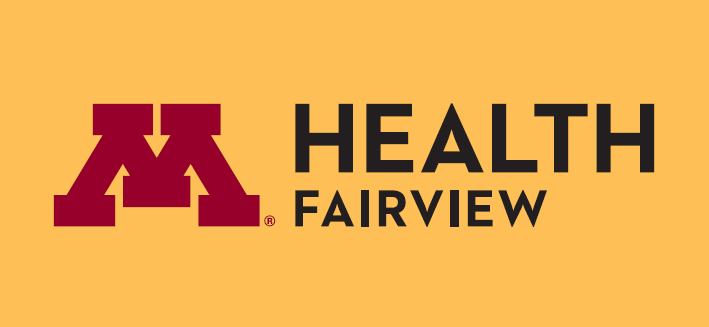Resources
Understanding Implicit BiasUNDERSTANDING IMPLICIT BIAS
Implicit bias is unconscious thinking that causes people to generalize and stereotype others without intending to do so. Implicit bias has a direct impact on patient outcomes and experience, as well as our experience as employees. We all have implicit biases; what we chose to do with them makes all the difference.
As an organization, we are committed to building awareness about implicit bias and taking steps to mitigate it for our patients and employees. Use this page as a resource to help you start the conversation, learn more, and begin to identify and assess your own biases.
Implicit Bias is the attitudes or stereotypes that affect our understanding, actions, and decisions in an unconscious manner.
Implicit bias is formed by many factors that we’ve categorized in three ways:
- Experience: The people you’ve met, the things you’ve seen, your education, and various life events.
- Environment: Your surroundings or the conditions in which you live or work. This includes your family, socioeconomic status, power, privilege, etc.
- Sense of Self: How your mind works, your identity, tendencies, personal preferences, etc.
Implicit bias impacts our interactions with people, including patients, customers, and colleagues. It can lead to microaggressions – comments or actions that subtly and often unconsciously or unintentionally express a prejudice attitude towards a member of a marginalized group.
In healthcare, this can lead to disparities in health outcomes.
Here are some examples:
- An analysis of more than one million clinical visits for children with symptoms of respiratory infections found that Black children were significantly less likely than White children to receive antibiotics. Gerber et al., 2013
- Primary care providers were more likely to rate visits with obese patients as a waste of time and spend 28% less time with obese patients than those with normal weight. Obesity Reviews, 2015
- Hispanic patients were seven times less likely to receive opioids in the emergency room than non-Hispanic patients with similar injuries. Journal of General Internal Medicine, 2013
- Women presenting with cardiac heart disease (CHD) symptoms are significantly less likely than men to receive diagnosis, referral and treatment, due to misdiagnosis of stress/anxiety. Journal of Women’s Health, 2009
Implicit Bias impacts our patients, colleagues, peers, and everyone we interact with at M Health Fairview.
Being aware of it is the key to changing it.

OD&L has put together resources for individuals and teams to help continue raising awareness and begin mitigating implicit bias in our work.
Understanding Implicit Bias (Team Development Session): Register your team for this 50-minute session where they will learn what implicit bias is, how it is formed, and how we can begin to reduce it.
Understanding Implicit Bias (Webinar): This 50-minute webinar is designed for individuals to learn what implicit bias is, how it is formed, and how we can begin to reduce it.
Team Discussion Guides: These discussion guides are designed to be used by Leaders with teams in 15-minute huddles or team meetings. Since each Team Discussion Guide builds off the one before it, we recommend you do them in order.
- Implicit Bias: What is implicit bias? How is it formed? Ground your team in a foundational understanding of implicit bias.
- Characteristics and Implicit Bias: Expand your team’s thinking on what characteristics are subject to implicit bias and discuss strategies for improving our interactions.
- Confronting Implicit Bias: How do we confront implicit bias within ourselves? With our colleagues? Learn strategies for having these conversations.
- Patient Bias: Care providers often experience microaggressions that are the result of a patient’s implicit bias. Discuss with your team how to respond in these situations.
See the More Resources tab for external resources you can use and share with your team!
There is a wealth of information about implicit bias, including its impact on healthcare. Use these links to explore, learn, and grow.
The key to reducing our bias is becoming aware of it and helping others to do the same.
Assessments: These resources can help you assess your understanding of implicit bias and explore our own implicit bias. Remember – implicit bias is something we all have.
- The Implicit Association Test (IAT): A product or Harvard University’s Project Implicit initiative, the IAT measures the strength of associations between concepts (e.g., black people, gay people, etc.) and attributes (e.g., good, bad) and/or stereotypes (e.g., athletic, clumsy, etc.). There are many tests users can take to help uncover their own implicit bias.
Websites: These organizations are at the forefront of implicit bias work and their websites have a ton of useful information.
- The Ohio State University’s Kirwin Institute for the Study of Race and Ethnicity
- Project Implicit: Project Implicit is a non-profit organization and international collaboration between researchers who are interested in implicit social cognition – thoughts and feelings outside of conscious awareness and control. The goal of the organization is to educate the public about hidden biases and to provide a “virtual laboratory” for collecting data on the Internet.
- MTV’s Look Different Bias Cleanse: Sign up for a 7-day bias cleanse that will help you begin to change your associations regarding race, gender, and anti-LGBTQ bias.
Videos: Visual learner? These videos can help you understand and explore implicit bias.
- Understanding Unconscious Bias: Video by The Royal Society that gives a simple explanation of implicit bias.
- Immaculate Perception: Tedx Talk by Jerry Kang on automatic processing and its role in implicit and explicit bias.
- How to Overcome Our Biases? Walk Boldly Toward Them: Tedx Talk by Vernā Myers on confronting our biases.
Frequent Asked Questions About Implicit Bias
How did this work begin at M Health Fairview?
In Spring of 2019, we were contacted by Stratis Health, a non-profit organization dedicated to supporting health care providers, staff, and administrators in their ongoing efforts to provide culturally-competent care in Minnesota. They wanted to work with us and the Minneapolis YWCA to create an implicit bias workshop aimed at helping people understand implicit bias and start raising awareness.
Why is talking about implicit bias important?
Implicit bias can lead to microaggressions – indirect, subtle expressions of discrimination towards an individual or a group. Microaggressions can cause harm. When interacting with patients, colleagues, or customers, we need to ensure we are not having a negative impact. Research has shown that microaggressions can lead to poor health outcomes for marginalized communities.
Does everyone have implicit bias?
Yes – implicit bias is part of our normal brain function as a human being.
Where does implicit bias come from?
Implicit bias is influenced by various factors, which we’ve categorized in three ways: experience, environment, and sense of self. You can learn more by signing up for the Understanding Implicit Bias webinar!
Is there a difference between implicit and unconscious bias?
No – these terms are used interchangeably.
Does having implicit bias mean that I’m racist?
No. Again, everyone has implicit bias. It’s nothing to be ashamed of but it is something to be aware of and to work towards reducing.
What is the difference between implicit bias and explicit bias?
Explicit bias is something you are aware of; it’s a choice and, generally, a strongly held belief. Implicit bias is unconscious and automatic.
How do I get rid of implicit bias?
You’ll probably never be able to be 100% free of implicit bias but that’s not the goal. The goal is to be aware of your implicit biases and what influences them so that you can choose to have better interactions with patients, colleagues, customers, and those in your personal life.

